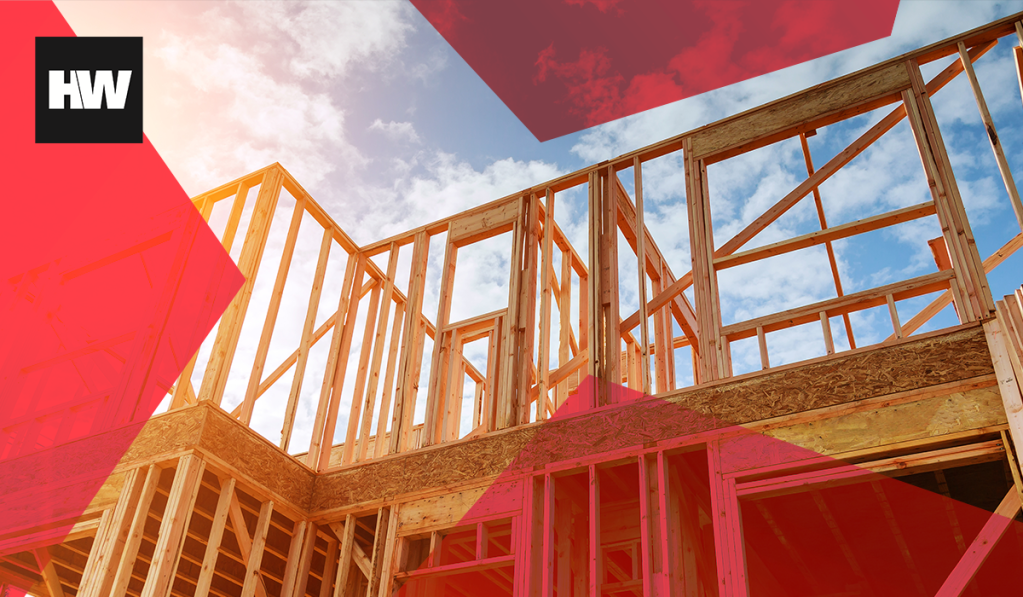
D.R. Horton, the nation’s largest homebuilder by gross revenue and total closings, this week released its second quarter earnings for the fiscal year, which executives deemed “outstanding,” despite ongoing supply chain challenges, “a very tight labor market,” and the massive uptick in mortgage rates.
D.R. Horton president and CEO David Auld kicked off the Tuesday earnings call with prepared remarks in which he pointed to solid growth despite ongoing pandemic-related concerns such as “extended” construction times, “highlighted by a 59% increase in earnings to $4.03 per diluted share.” That’s up from $2.53 per share in the prior-year quarter, according to Mike Murray, executive vice president and co-chief operating officer.
Auld said the homebuilder started construction on 24,800 homes this quarter and homes and inventory “increased 30% from a year ago with only 600 unsold completed homes across the nation. With 33,900 homes in backlog, 59,800 homes in inventory, a robust loss supply and strong trade and supplier relationships, we are well-positioned for consolidated revenue growth of greater than 25% this year.”
He continued: “We believe our strong balance sheet, liquidity, and low leverage position us to operate effectively through changing economic conditions. We plan to maintain our flexible operational, and financial position by generating strong cash flows from our homebuilding operations while managing our product offerings, incentives, home pricing, sales pace, and inventory levels to optimize returns.”
The company says the market for new homes remains strong, although the net sales orders in the second quarter saw a decline of 10% to 24,340 homes. The value of those homes, however, increased by 10% from the previous year to $9.7 billion, with an average sales price of net sales orders in the second quarter of $400,600, according to Paul Romanowski, executive vice president and co-chief operating officer.
But while Romanowski noted the demand remains despite the increase in mortgage rates, D.R. Horton is “continuing to sell homes later in the construction cycle to better ensure the certainty of the home close date for our homebuyers with virtually no sales occurring prior to the start of home construction. We expect to continue managing our sales pace in the same manner for the rest of the year.”
D.R. Horton ended the quarter with 59,800 homes in inventory, an increase of 30% from a year ago, and as of March 31, 26,000 of those homes were not sold, though only 600 were complete, Romanowski said.
“Our average construction cycle times for homes closed in the second quarter increased by almost two weeks since our first quarter and over two months from a year ago,” he said. “Although we have not seen improvement in the supply chain yet, we continue working to stabilize and then reduce our construction cycle times to historical norms.”
Murray elaborated on that, saying there was a joint decision to extend construction cycle times.
“We made the decision in several of our geographies to delay the release of homes until we could give a better delivery date to those customers and provide a better experience for them in the backlog process. So we saw a very strong demand in the quarter, but we did see the cycle times elongate,” Murray said. “I think we added two weeks this quarter, unfortunately, and we wanted to make sure we did not create more buyers in backlog with an unhappy experience.”
Bill Wheat, chief financial officer, said the limited supply of homes on the market has allowed the company to raise prices while also maintaining “a very low level of sales incentives” in most of D.R. Horton’s markets. Although material costs increased 2.5% per square foot and lot costs increased 2.8% – and Wheat said the company anticipates costs will continue to increase – the company expects the strength of the market to counteract the additional expense.
“However, with the strength of today’s market conditions, we expect most cost pressures to be offset by price increases in the near term. We currently expect our home sales gross margin in the third quarter to be slightly better than the second quarter,” he said.
Looking forward, Jessica Hansen, vice president of investor relations, said the homebuilder expects market conditions to “continue to reflect strong demand from homebuyers with continuing supply chain challenges.”
For the full fiscal year, the company expects consolidated revenues of $35.3 billion to $36.1 billion, with “homes closed” in the range of 88,000 to 90,000 homes, Hansen said.
“We still expect to generate positive cash flow from our homebuilding operations this year, and we will continue to balance our cash flow utilization priorities among our core homebuilding operations, increasing our rental inventories, maintaining conservative homebuilding leverage, and strong liquidity, paying an increased dividend, and consistently repurchasing shares,” she said.






